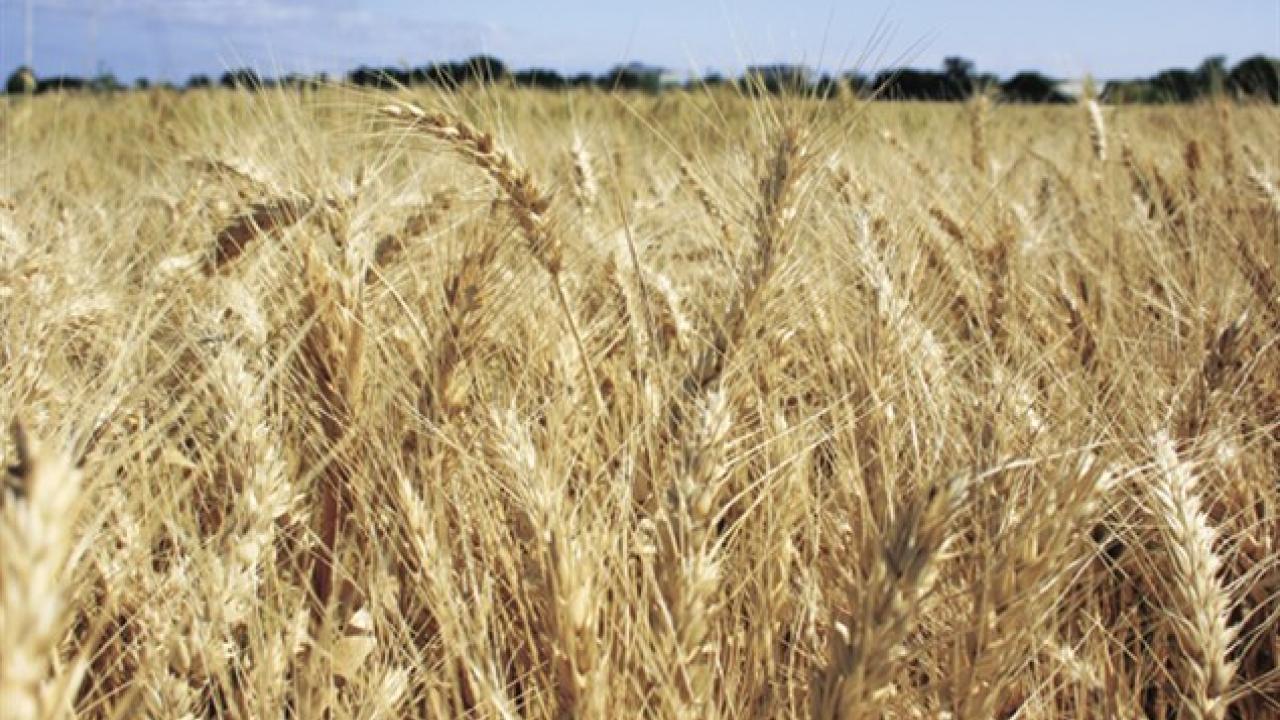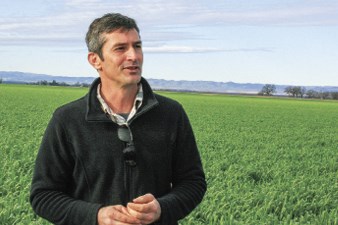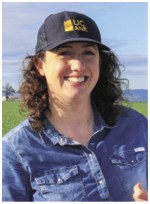
Researchers Say to Not Apply All Nitrogen on Wheat in One Application
Sacramento Valley wheat farmers face unique challenges in matching available nitrogen with the changing needs of their rainfed crop.
If all the fertilizer is applied at planting in the fall, much of the nitrogen can be leached below the root zone by winter rains before the crop needs the nutrients for spring growth.
But doling out the nitrogen in increments, as many San Joaquin Valley growers do with their irrigated wheat, runs the risk of either being unable to get access to wet fields when the crop needs fertilizer, or facing a dry period when the plants lack needed water to carry the nutrients down into the root zone.
“Based on the research we have done, we think a majority of your nitrogen should be applied in-season,” said Mark Lundy, University of California Cooperative Extension small grains specialist, and faculty member in the Department of Plant Sciences at UC Davis. “The premise is you’re going to make your decision in-season based on what the system is telling you in-season. The danger of responding too late to a stress signal is much less than the savings from using the system.”

Lundy made his remarks while discussing a system for managing nitrogen in the Sacramento Valley with the growers and pest control advisors who came to a Cooperative Extension wheat field day at an Erdman Farms field outside Grimes.
While a general recommendation is to apply just one-third of the season’s fertilizer at planting to minimize leaching losses, a preplant soil quick test will give a general idea how much nitrogen is already available.
“You can tell if you’re very high, very low or uncertain on your soil nitrate,” Lundy said. “Water works for the test in dry soil, but calcium chloride is a good idea for wet. You can use a bottle of known nitrate content to calibrate your strips.”
Erdman Farms grower Kim Gallagher opted for a little caution and applied half the nitrogen this year to the Colusa County field up front.
The next step in the system is to apply enough preplant fertilizer to a strip in the field to be sure that area does not suffer from nitrogen deficiency. This area can serve as a visible standard to which the rest of the field can be compared.
“We try to create a zone in the field where we know the crop is not nitrogen deficient,” Lundy said. “We want to create a place where we know any problems are not the result of nitrogen deficiency.”
The progress of the crop can then be monitored with handheld tools, like the Greenseeker or atLeaf chlorophyll meter, which measure the vegetation index and nitrogen status of the crop.
There are, however, general rules about how much nitrogen a wheat crop needs and when.
“A 7,500-pound crop uses around 180 pounds of nitrogen, with 80 percent in the grain and 20 percent in the straw,” Lundy said. “This season about 40 percent of the uptake for the season has happened two weeks into March, and after another three weeks it will be about 80 percent.”
There are multiple benefits from following this detailed system for monitoring wheat-crop nitrogen needs over the course of the season.
“Improved nitrogen efficiency in wheat is a win-win, because we can save dollars on fertilizer and protect the environment,” said Sarah Light, UCCE agronomy farm advisor in Sutter, Yuba and Colusa counties. “It lets us meet all of our goals.”

Applying nitrogen when the crop needs it saves money and also controls nitrate leaching into streams, creeks and the underground aquifer, and nitrous oxide emissions into the air.
“Wheat is primarily a rainfed crop in the Sacramento Valley, so you can’t really modify your irrigation practices to control leaching. So, fertilizer applications are key,” Light said. “We have to keep nitrogen in the root zone where the plants can get at it.”
The amount and timing of fertilizer applications is one of the few things Sacramento Valley wheat growers can control after planting.
“One thing I’ve heard consistently is that wheat is hard to manage profitably,” Light said. “Nitrogen efficiency, the amount of nitrogen applied that actually gets into your crop, is one area where we can make a difference.”
UC maintains detailed records of how different wheat varieties perform every year in different regions of the state, and under varying irrigation and fertilization programs.
“While variety selection is important, what I’m seeing is that 30 to 40 percent of the results is due to what you’re doing with your management and how that interacts with your particular site- year-conditions,” Lundy said. “If we can do more in-season fertilizer with this crop it is a win, because efficiency on average is 15 percent greater if you apply at tillering instead of preplant.”
The total amount of nitrogen needed varies quite a bit depending on the potential yield of the field.
“I work with growers in the San Joaquin Valley who are almost entirely irrigated, so they are already doling out their nitrogen in increments,” Lundy said. “I know a grower in the San Joaquin Valley who does everything on drip. He levels his field, knows exactly how much nitrogen he is applying, and applies according to the timing of crop demand. He gets about 9,000 pounds every year and uses around 250 pounds of nitrogen, which is highly efficient, but if you’re not getting 9,000 pounds, you have no business putting on 250 pounds.”
There is substantial opportunity to save money on fertilizer, and improve yield and quality in wheat, with improved nitrogen efficiency, he said.
“I would say 45 percent nitrogen-use efficiency for wheat in this state is average,” Lundy said. “A particular field could be 30 percent, or it could be 55 percent. You can do better than that if you monitor your field.”
(Original article by Bob Johnson, published in AgAlert, part of the California Farm Bureau Federation. Edits by Mark Lundy and Ann Filmer, Department of Plant Sciences, UC Davis.)
Related information:
- UC Helps Growers Comply with New Regulations. Tim Hearden, Western Farm Press.
- Growers Find Success With Nitrogen Savings. Tim Hearden, Western Farm Press.
